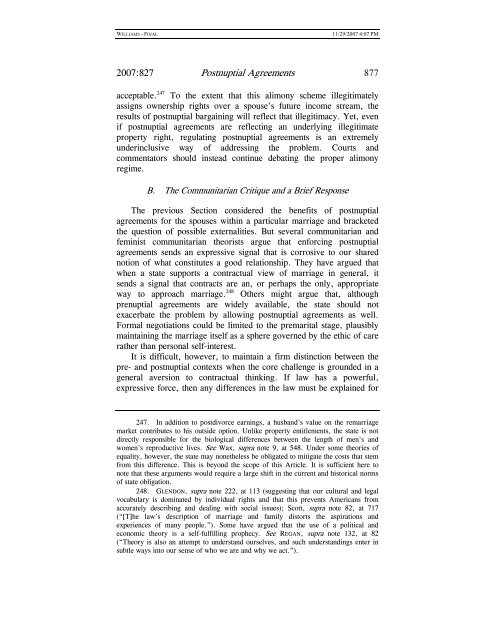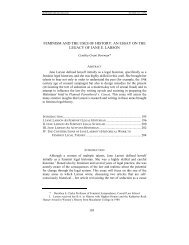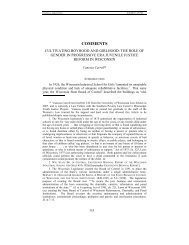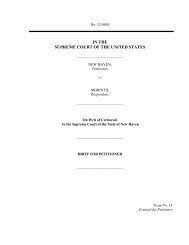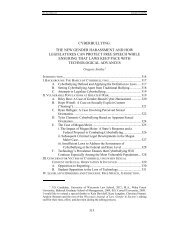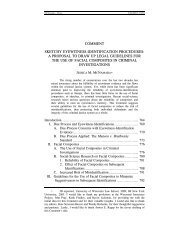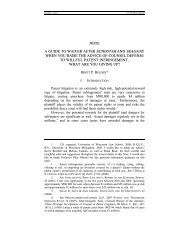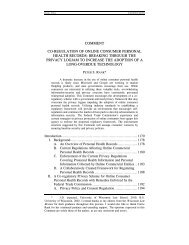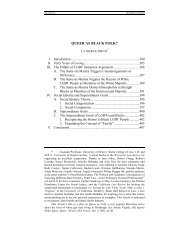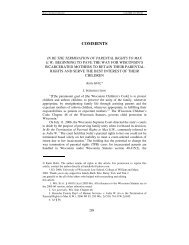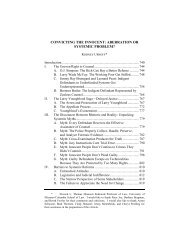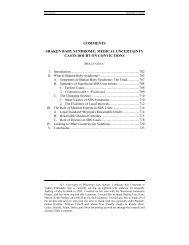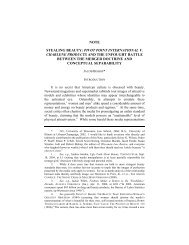POSTNUPTIAL AGREEMENTS - UW Law School
POSTNUPTIAL AGREEMENTS - UW Law School
POSTNUPTIAL AGREEMENTS - UW Law School
Create successful ePaper yourself
Turn your PDF publications into a flip-book with our unique Google optimized e-Paper software.
WILLIAMS - FINAL 11/29/2007 4:07 PM<br />
2007:827 Postnuptial Agreements 877<br />
acceptable. 247 To the extent that this alimony scheme illegitimately<br />
assigns ownership rights over a spouse’s future income stream, the<br />
results of postnuptial bargaining will reflect that illegitimacy. Yet, even<br />
if postnuptial agreements are reflecting an underlying illegitimate<br />
property right, regulating postnuptial agreements is an extremely<br />
underinclusive way of addressing the problem. Courts and<br />
commentators should instead continue debating the proper alimony<br />
regime.<br />
B. The Communitarian Critique and a Brief Response<br />
The previous Section considered the benefits of postnuptial<br />
agreements for the spouses within a particular marriage and bracketed<br />
the question of possible externalities. But several communitarian and<br />
feminist communitarian theorists argue that enforcing postnuptial<br />
agreements sends an expressive signal that is corrosive to our shared<br />
notion of what constitutes a good relationship. They have argued that<br />
when a state supports a contractual view of marriage in general, it<br />
sends a signal that contracts are an, or perhaps the only, appropriate<br />
way to approach marriage. 248 Others might argue that, although<br />
prenuptial agreements are widely available, the state should not<br />
exacerbate the problem by allowing postnuptial agreements as well.<br />
Formal negotiations could be limited to the premarital stage, plausibly<br />
maintaining the marriage itself as a sphere governed by the ethic of care<br />
rather than personal self-interest.<br />
It is difficult, however, to maintain a firm distinction between the<br />
pre- and postnuptial contexts when the core challenge is grounded in a<br />
general aversion to contractual thinking. If law has a powerful,<br />
expressive force, then any differences in the law must be explained for<br />
247. In addition to postdivorce earnings, a husband’s value on the remarriage<br />
market contributes to his outside option. Unlike property entitlements, the state is not<br />
directly responsible for the biological differences between the length of men’s and<br />
women’s reproductive lives. See Wax, supra note 9, at 548. Under some theories of<br />
equality, however, the state may nonetheless be obligated to mitigate the costs that stem<br />
from this difference. This is beyond the scope of this Article. It is sufficient here to<br />
note that these arguments would require a large shift in the current and historical norms<br />
of state obligation.<br />
248. GLENDON, supra note 222, at 113 (suggesting that our cultural and legal<br />
vocabulary is dominated by individual rights and that this prevents Americans from<br />
accurately describing and dealing with social issues); Scott, supra note 82, at 717<br />
(“[T]he law’s description of marriage and family distorts the aspirations and<br />
experiences of many people.”). Some have argued that the use of a political and<br />
economic theory is a self-fulfilling prophecy. See REGAN, supra note 132, at 82<br />
(“Theory is also an attempt to understand ourselves, and such understandings enter in<br />
subtle ways into our sense of who we are and why we act.”).


